
Plexiglas, acrylic, perspex, vikuglas or altuglas: whatever you call it, it is the luxury plastic sheet for endless applications. Think traditional facade advertising, milling letters or interior applications such as photo on panel and wall circles. It has many printing options and you can choose from crystal clear, opal and block-out varieties. Read all about this versatile material in this article.
Variants: clear, opal and block-out
The clear variant is most popular as a (photo) panel and in contour-cut form on the wall. Plexiglas opal has a milky white appearance that makes the print come to life in combination with light. Very suitable for light boxes so! Plexiglas block-out is chosen when the print should not shine through on a colored wall, for example. The entire back of the plexiglass is covered with a light-resistant film.
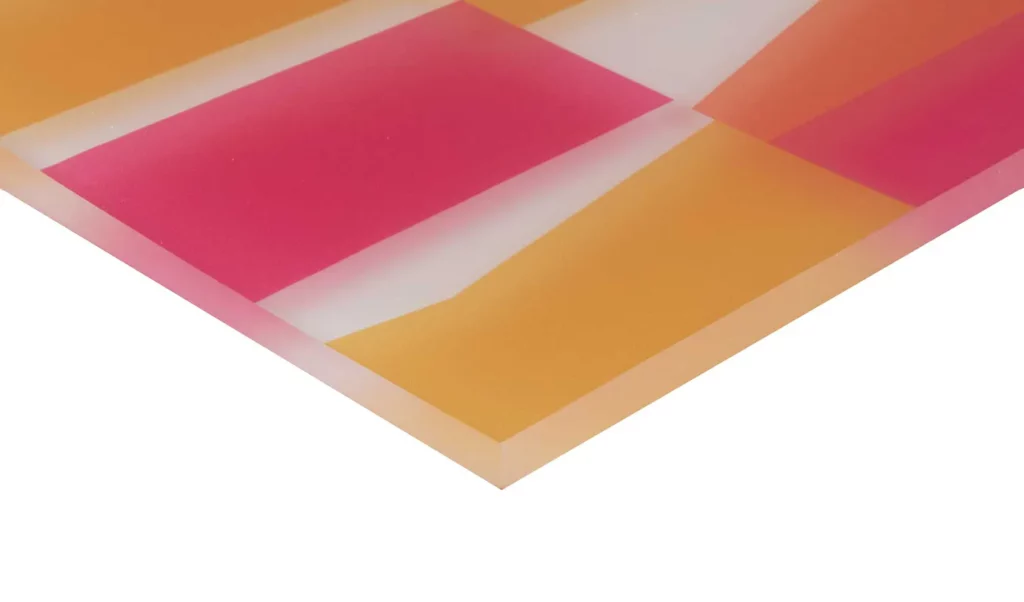
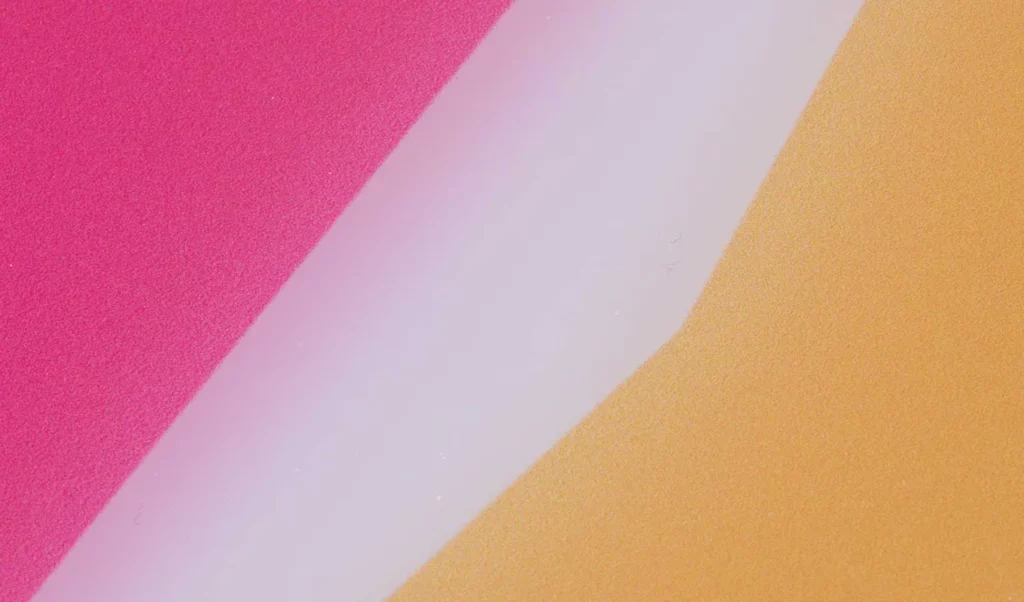

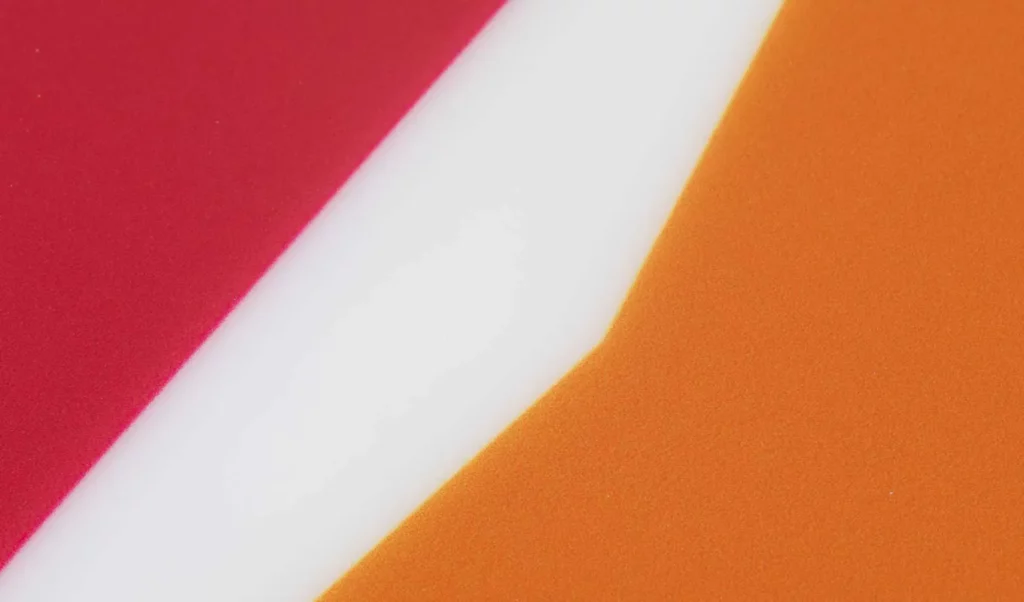
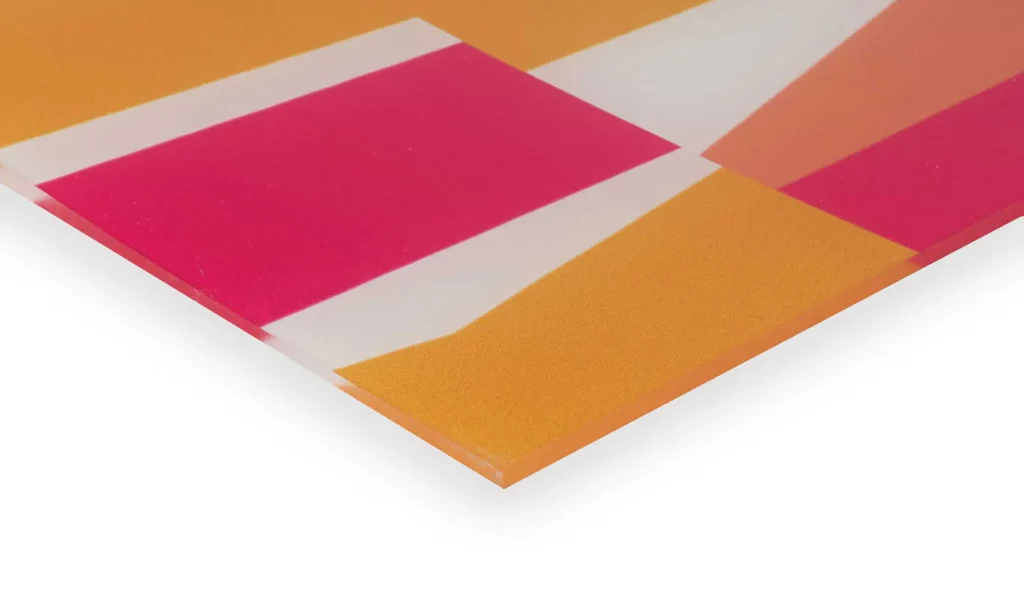
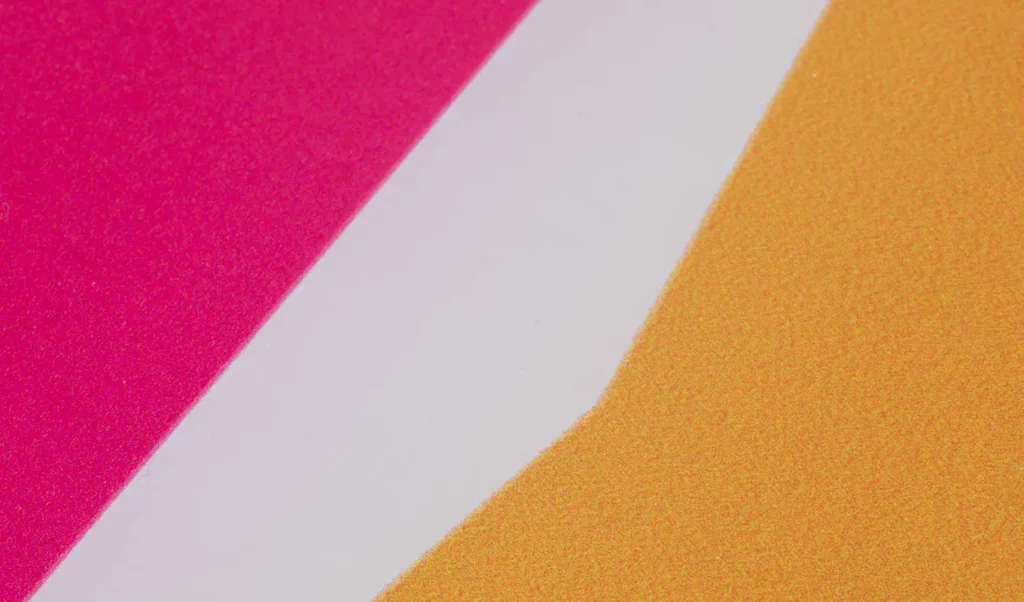
Special effects with white print
With the clear variant of plexiglass, you can work with white print for the coolest effects. White print is a printing technique in which both full color and white ink are used or just white ink. White enhances the coverage and color strength of full color on Plexiglas. Do you choose one layer of color with two layers of white and want to fill the entire panel with white? Then keep in mind that white ink is opaque but does not completely block out light. Choose plexiglass block-out if the print should not shine through at all.
PS: The lower the amount of white ink, the more transparent the effect of your print. The higher the density (density of the ink), the more powerful the colors.
Full color print with white
With white under or over a full color print layer, the print comes out better on a transparent, colored or dark background. Are you printing on the inside of a glass wall or acrylic glass wall and need it to be readable from the outside? Then print the white ink over the full color print layer. You have a choice of one layer (100%) or two layers (200%) of white ink when composing the product. The difference? With two layers of white, the print contains more white ink and the white layer is more opaque.
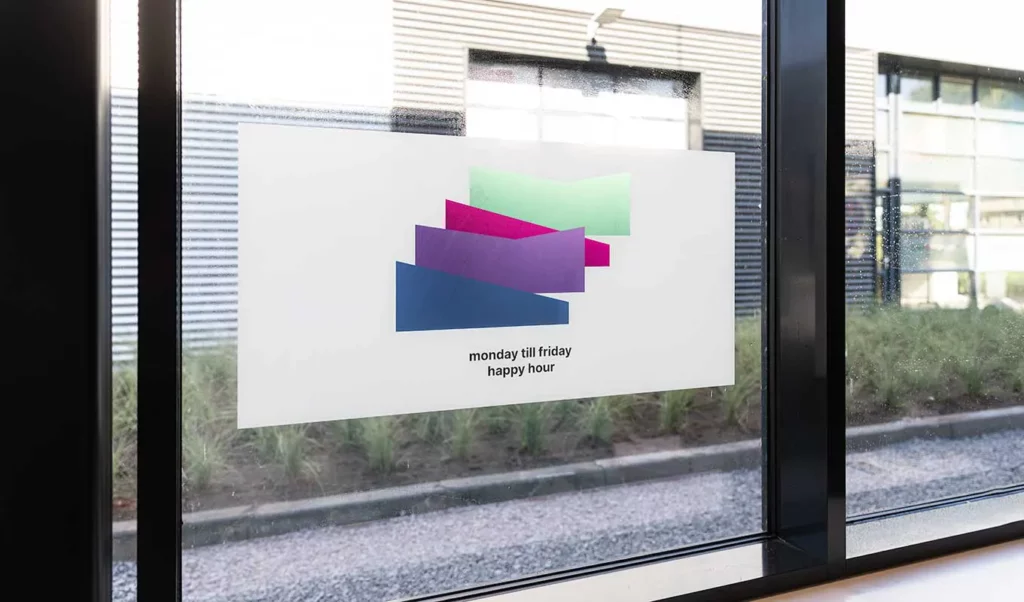
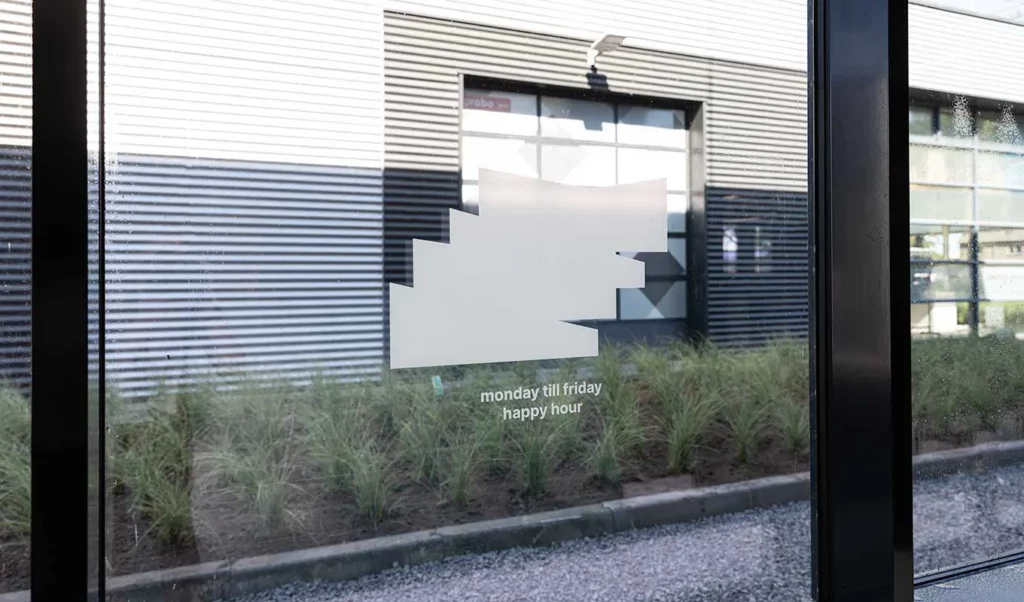
Sandblast effects: moderate visibility with light penetration
With a combination of 25% white ink and 25% black under or over a full color layer, you create a sandblast/privacy effect. Shapes and silhouettes then remain visible without losing privacy. You have several options to choose from in the ordering process:
- Full color image + sandblast effect: the logo in full color as well as the space around it is printed with sandblast effect.
- Sandblast effect with logo diapositive: the logo is not printed, the space around it is printed with sandblast effect.
- Sandblast effect with opaque objects: both the logo and the space around it are printed with sandblast effect.
- Full fill with sandblast: the logo is printed in full color and the space around it is filled with the sandblast effect.
- Crystal clear with sandblast objects only (logo): the logo is printed with the sandblast effect and the space around it remains crystal clear.
Depth and protection through the print on backside
Because of the print on the back, you can see the ink through the material. This creates depth and a luxurious look. Another advantage is that the fragile plexiglass is better protected from dirt, UV light and scratches on the print.
Endless creative applications
Plexiglass can be used for many applications. Think of from the popular photo panel or wall panel to the milling letters on the facade of your storefront. But above all, let your own creativity run free. We collected a number of examples. From Plexiglas signage, kitchen backsplashes to partitions.
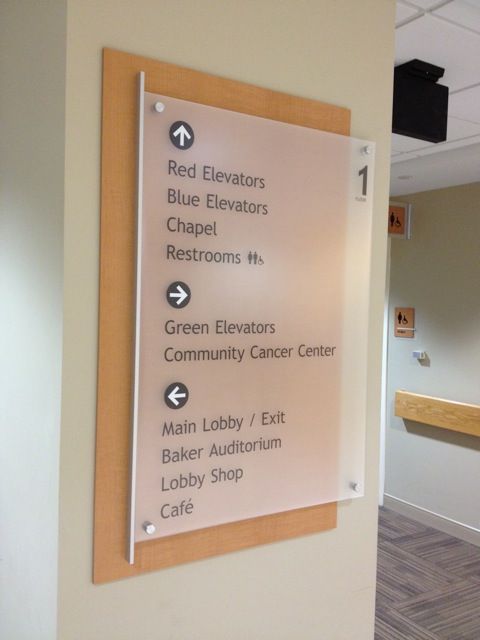
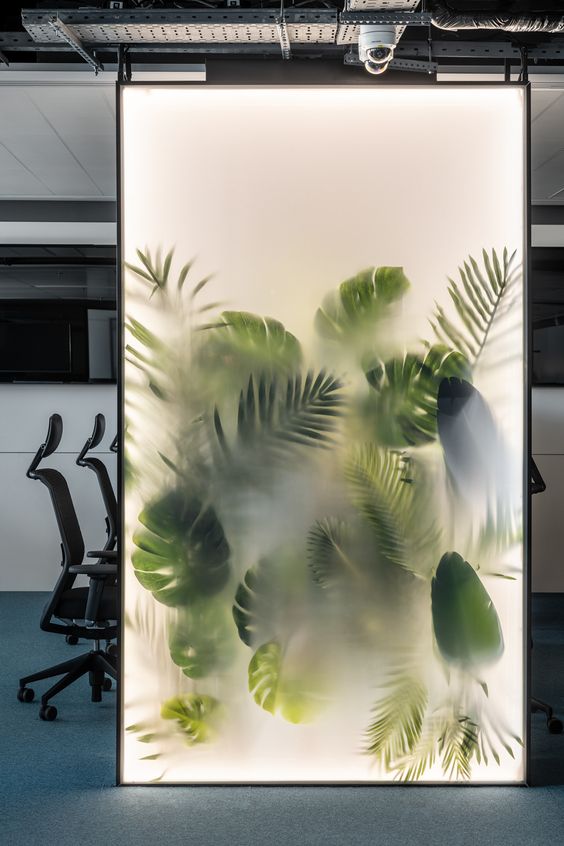
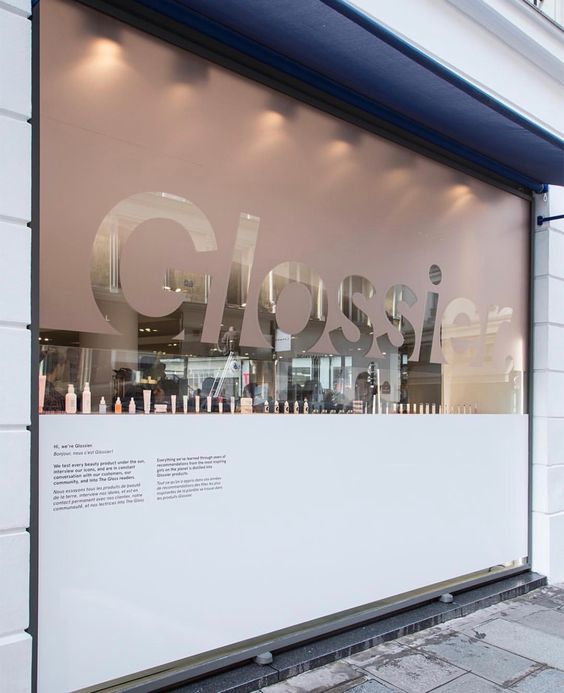
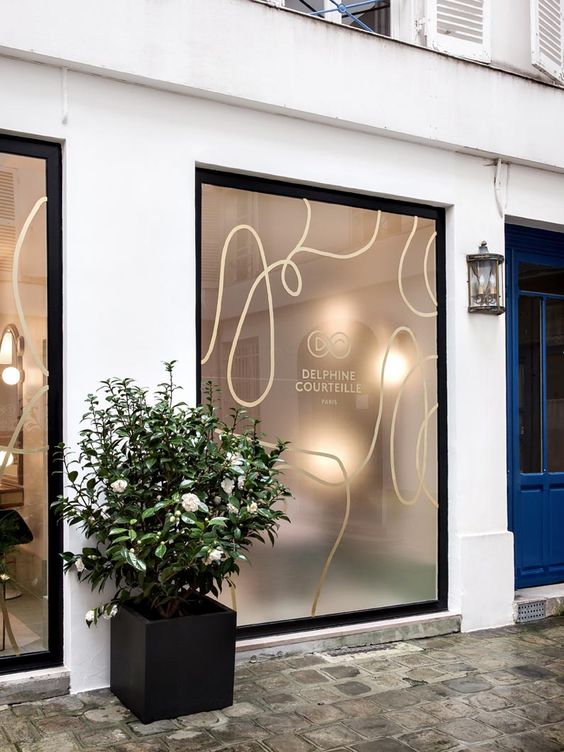
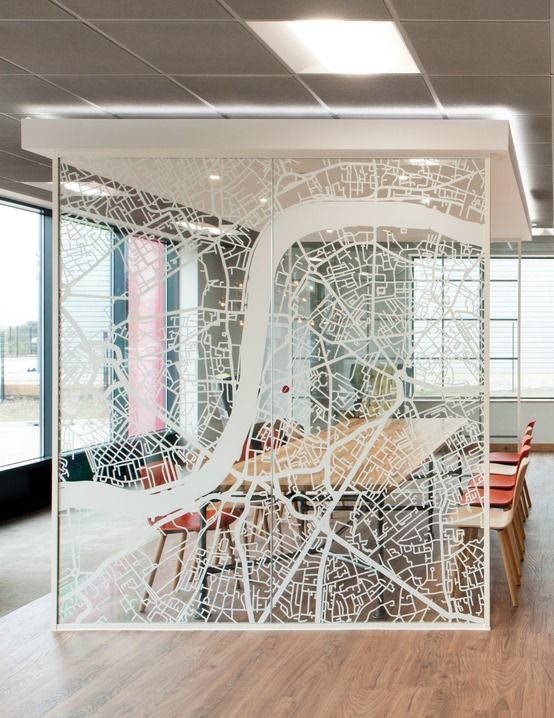
Stay tuned for more...our inspiration is far from dried up.
